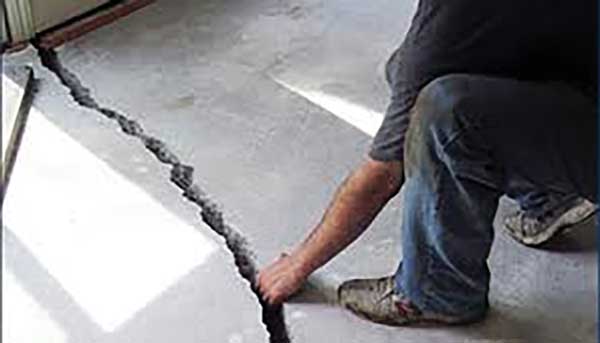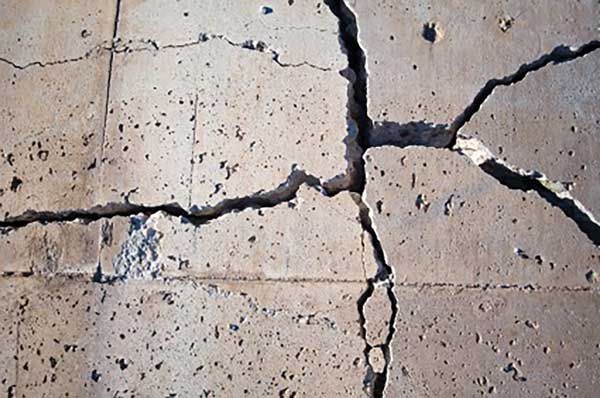At what point do you need to engage outside help for facility repairs on anything from concrete structures to metal structures and the litany of problems that can occur?
By Jeff Eriks
When it comes to facility repairs, it seems like they always take a back seat to other business requirements that require funding. The reason being is that companies have a limited amount of working funds to spend and projects that usually take priority are ones that generate new revenue. Projects to fix or repair an existing facility are usually considered a business expense and not capital (from an accounting perspective) and, therefore, may have a negative connotation within the business itself. So how do you determine when it is a major or minor repair on a facility or when do you need outside help?
Common Points of Concern
As a whole, the waste industry is very rough on their buildings. Transfer stations, recycling facilities, container repair shops and solidification facilities all have varying types of wear and tear. Facilities that require material to be tipped onto the floor (whether it be MSW or recyclables) and then moved around with loaders takes a large toll on the structural integrity of your floor. This is especially true if it is not designed correctly to allow for the abuse it is going to take. Container repair shops require a floor designed for dropping containers and moving them around. Solidification facilities require liquid materials to be combined with various mixing agents and excavators working the material to remove it from the pit. All of these facilities must have structural concrete components and metal buildings that are specifically designed for the application in use or you will have major repairs quickly.
Another point of concern on these buildings (or an area that I have seen damaged frequently) is overhead garage doors. Whether it is the side framing or the overhead door itself, many overhead door companies are not familiar with the operations of these facilities and do not design them to be avoided by the different skill level of drivers entering the facility. Remember, not everyone entering these facilities owns a CDL; there are several third-party vendors that enter solid waste facilities.
These common points of concern should be taken into consideration when designing a facility to allow it to operate without requiring major maintenance every few months. But how do you know when repairs are absolutely required at your facility? Keep reading to find out a few hot buttons for when your facility needs to be assessed or repaired.

Concrete Structures
When it comes to concrete structures (floors, push walls, tip walls, scrape walls, curb walls, pits or other building components), operators need to be on the lookout for significant cracking. I say significant cracking because concrete inherently cracks. Most cracks are minor cracks and do not cause any damage or structural issues to the building. Insignificant/non-structural concrete cracking can be caused by various reasons, most during placement and initial curing. On the flip side, significant concrete cracking can be caused by poorly placed subgrade, improper concrete mixture, poorly made concrete, placement in too large of pours, lack of reinforcement, poorly placed reinforcement and other reasons. If cracks are wide enough to be able to fit your finger into it, it could mean you have some structural issues with your concrete. However, I stress that every concrete design and reinforcement is different and should be assessed prior to hiring someone to complete repairs. A structural engineer should be engaged to evaluate any concerning cracks and provide an assessment of the condition. If there are structural issues with the concrete, those repairs should absolutely be addressed before someone is injured or it takes a toll on your equipment.

Steel Structures
Let’s look at the physical building itself. I have walked into many buildings that have structural steel damage, overhead doorframe damage and other items that put the structural integrity of the facility itself in danger. Identifying these issues are not as easy as seeing a crack in concrete. Sometimes the column can be slightly twisted from a vehicle being backed into it, or there could be loose bolts or connections from vibrations in the facility, or siding/roofing could be loose and could potentially fall from the building in windy conditions, which is hazardous to employees or others onsite. I would recommend that if a facility has been in operation for several years (approximately five to 10) and there have been instances of the structure being hit, bring someone out to evaluate it. This person needs to be a licensed engineer trained to evaluate structural conditions. A trained set of eyes can see and identify current issues or potential issues to the building’s structure that an untrained set of eyes would not think is a problem. This is especially prone to happen in facilities that have been repurposed to act as transfer stations or recycling facilities but were not originally built for this function. The reason for this is these repurposed buildings do not typically have the opening sizes in the walls, the strength of the concrete, the interior clearance heights or other specifics that are designed into a facility designated for a transfer station or recycling facility. The trained eye inspector can identify problems and recommend immediate action for these critical items as well as others that are not as critical. Then an action plan for the identified problems and budget can be created accordingly.
Fire Incidents
If you have had any fire incidents in your building that have caused burn marks, smoke damage, melted insulation or other such signs of extensive heat or fire damage, the building’s structure should always be evaluated. Heat can warp and damage the metal building structure, no matter the size. The hotter the fire was, the higher the likelihood that the structure is damaged or compromised and may need repairs. Heat also affects bolts, washers, nuts and other connection points and once they are weakened you could be in danger of large incidents at the facility.
Safety Is Priority
At the end of the day, safety is the number one priority. Many facilities endure issues and inconsequential damage during normal daily operations and if the damage does not cause a safety issue, then it likely will not be a focus to get the repair done immediately. However, there are times when a facility gets damaged to the point that it does cause safety concerns. Concrete issues, building structure damage, overhead door damage, fire system failure or damage and items such as this would lead to a higher urgency in repairing the facility sooner rather than later. Safety is of the utmost importance for all facilities, so it is necessary to make sure that there is not damage that causes any potential safety concerns.
Take Aways
Preventative measures are always a good first step, which means training and education. Safety directors can train to help spot any potential issues that may need a second opinion; many metal building manufacturers hold educational training on how their buildings are assembled and how to maintain them; and operators can take courses on concrete offered by local or online training institutes. Implementing these preventative measures is a good “first review” of your building before deciding if an engineer’s evaluation is required.
However, if there is just one take-away from this piece, it would be that the person physically operating the facility may not be able to notice potential issues that need correction or repairs. It is important that, as an operator, you watch and monitor the people within your facility and if you see damage caused to it, a quick evaluation should be conducted. If it appears there may be an issue, get a second opinion. In most cases you will probably be fine, but sometimes that second opinion can save lives.
Jeff Eriks is Vice President of Business Development at Cambridge Companies (Griffith, IN), a design-build firm working with the waste industry for more than 20 years. During this time, more than 100 solid waste design-build projects have been completed including new build, repairs, upgrades and/or modifications at transfer stations, recycling centers/MRFs, hauling companies, landfill facilities, office buildings and more. Cambridge Companies continually monitors the industry to determine any new needs, changes or improvements that will benefit their clients and improve their design-build solutions. Jeff can be reached at (219) 972-1155, via e-mail at [email protected] or visit www.CambridgeCoInc.com.
